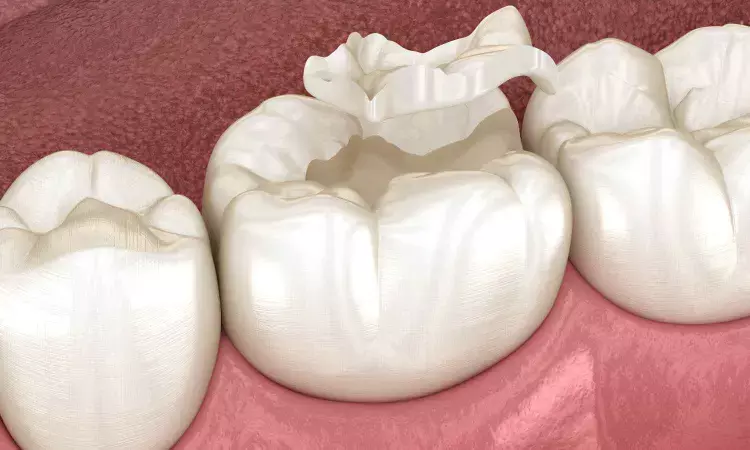- Home
- Medical news & Guidelines
- Anesthesiology
- Cardiology and CTVS
- Critical Care
- Dentistry
- Dermatology
- Diabetes and Endocrinology
- ENT
- Gastroenterology
- Medicine
- Nephrology
- Neurology
- Obstretics-Gynaecology
- Oncology
- Ophthalmology
- Orthopaedics
- Pediatrics-Neonatology
- Psychiatry
- Pulmonology
- Radiology
- Surgery
- Urology
- Laboratory Medicine
- Diet
- Nursing
- Paramedical
- Physiotherapy
- Health news
- Fact Check
- Bone Health Fact Check
- Brain Health Fact Check
- Cancer Related Fact Check
- Child Care Fact Check
- Dental and oral health fact check
- Diabetes and metabolic health fact check
- Diet and Nutrition Fact Check
- Eye and ENT Care Fact Check
- Fitness fact check
- Gut health fact check
- Heart health fact check
- Kidney health fact check
- Medical education fact check
- Men's health fact check
- Respiratory fact check
- Skin and hair care fact check
- Vaccine and Immunization fact check
- Women's health fact check
- AYUSH
- State News
- Andaman and Nicobar Islands
- Andhra Pradesh
- Arunachal Pradesh
- Assam
- Bihar
- Chandigarh
- Chattisgarh
- Dadra and Nagar Haveli
- Daman and Diu
- Delhi
- Goa
- Gujarat
- Haryana
- Himachal Pradesh
- Jammu & Kashmir
- Jharkhand
- Karnataka
- Kerala
- Ladakh
- Lakshadweep
- Madhya Pradesh
- Maharashtra
- Manipur
- Meghalaya
- Mizoram
- Nagaland
- Odisha
- Puducherry
- Punjab
- Rajasthan
- Sikkim
- Tamil Nadu
- Telangana
- Tripura
- Uttar Pradesh
- Uttrakhand
- West Bengal
- Medical Education
- Industry
Calcium-Based Additives Reduce Soft Drink Erosion, Protect Enamel and Dentin, suggests study

According to a new study, solutions containing calcium lactate (CLP) significantly reduced the erosive potential of soft drinks, especially when combined with LPP or TMP, offering enhanced protection for dentin. Notably, LPP alone was effective in minimizing erosion of both enamel and dentin. These findings suggest clinical benefits of this strategy for high-risk individuals prone to erosive tooth wear, particularly those less compliant with preventive measures.
A study was done to evaluate the erosive potential of a soft drink modified with film-forming polymers and calcium on bovine enamel and dentin. Sprite Zero Sugar was modified with linear sodium polyphosphate (LPP–10 g/L) and sodium trimetaphosphate (TMP-10 g/L), individually or combined with calcium lactate pentahydrate (CLP–4.35 g/L). Enamel and dentin specimens were randomly assigned into six groups (n = 10/substrate): 1. C− (negative control–no modification); 2. LPP; 3. TMP; 4. LPP+CLP; 5. TMP+CLP; 6. C+ (positive control–CLP).
The specimens underwent an erosion-remineralization cycling. Surface loss (SL, in μm) was measured with an optical profilometer. Color and viscosity of the drinks were analyzed. Data were statistically analyzed (α=0.05). Results: For enamel and dentin, LPP significantly reduced the erosive effect of the drink compared to C- (p < 0.001 for both), with reductions of approximately 53 % and 41 %, respectively. TMP showed no significant difference from C− for both substrates. C+ reduced SL by 87 % in enamel and 38 % in dentin when compared to C− (p < 0.001).
When CLP was combined with the polymers, in enamel, a 97 % reduction in SL for LPP+CLP and TMP+CLP was observed. In dentin, reductions of 56 % and 48 % were observed for LPP+CLP and TMP+CLP. No significant differences were observed between the groups and the C- regarding color and viscosity (p > 0.05). All solutions containing calcium lactate (CLP) were effective in reducing the erosive potential of the original soft drink. The combinations of CLP with LPP or TMP significantly enhanced protection, especially for dentin. Notably, LPP alone was effective in minimizing erosion of both enamel and dentin. Reducing the erosion potential of soft drinks may benefit non-collaborative individuals with high risk for erosive tooth wear.
Reference:
Cláudia Allegrini Kairalla, Milena Rodrigues Muniz, Letícia Oba Sakae, Fernando Neves Nogueira, Idalina Vieira Aoki, Juliano Pelim Pessan, Alessandra Bühler Borges, Taís Scaramucci. Reduction of the erosive potential of a soft drink with polymers and calcium, Journal of Dentistry, Volume 161, 2025, 105935, ISSN 0300-5712, https://doi.org/10.1016/j.jdent.2025.105935.
Dr. Shravani Dali has completed her BDS from Pravara institute of medical sciences, loni. Following which she extensively worked in the healthcare sector for 2+ years. She has been actively involved in writing blogs in field of health and wellness. Currently she is pursuing her Masters of public health-health administration from Tata institute of social sciences. She can be contacted at editorial@medicaldialogues.in.
Dr Kamal Kant Kohli-MBBS, DTCD- a chest specialist with more than 30 years of practice and a flair for writing clinical articles, Dr Kamal Kant Kohli joined Medical Dialogues as a Chief Editor of Medical News. Besides writing articles, as an editor, he proofreads and verifies all the medical content published on Medical Dialogues including those coming from journals, studies,medical conferences,guidelines etc. Email: drkohli@medicaldialogues.in. Contact no. 011-43720751


